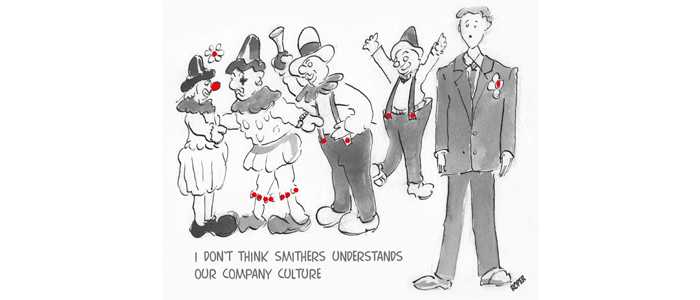“Every organisation is perfectly designed for the results it is getting”.
Let’s start by understanding this rather frustrating truism. “Results” we can understand as all consequences including financial, social, environmental, technical and so on. Results that are both intended and unintended, economic and behavioural.
“Designed” is perhaps more complicated, we may not think of our organisation as being designed at all. And yet whether deliberate or accidental all of our creations are designed. The branding, products or services, the physical spaces, the tools and equipment and the organisational systems and structure will all have been designed. The one thing that we often do leave to chance is the culture.
So if we want to change the results we are getting, we need to change the design.
Typically, we start by looking at performance and efficiency. We crack the whip on both and we may see a shift in performance and if we crack the whip for long enough people may get used to the new ways of doing things and there may be a lasting difference in results. However, if people are already working hard and if we are looking for more than a marginal up tick in performance, just getting people to work harder is unlikely to deliver sustained improvements.
There is no doubt that there are often lots of inefficiencies built into our systems and that technology often gives us the opportunity to collapse value chains allowing the business to benefit from additional margins.
However, by far the biggest mediator of performance is culture. Culture is a catch all word that refers to the way a group of people habitually interact with one another. Cultures form extremely quickly in any group and are disproportionately influenced by the more dominant characters, often formal leaders, sometimes informal leaders.
Culture can enhance results through collaboration, discretionary effort, efficiency, innovation and creativity or it can erode results by creating politics, minimal effort, inefficiencies and innovation and creativity which is directed at things other than productivity.
The critical difference between these two extremes is leadership. Leaders define cultures. Put another way, if you want to upgrade results, you need to upgrade performance; if you want to upgrade performance, you need to upgrade culture and to upgrade culture you need to upgrade leadership.
This is not to say that leadership needs to be replaced. Leadership in our society is poorly understood – even by leaders. Far too often our image of leaders is formed by appalling role models (like The Apprentice); this is not leadership, it is just being frightening.
The essence of leadership is the ability to inspire people and teams to levels of performance they did not think they were capable of and to create the conditions in which the team form a culture which makes it self-sustaining.
The critical pre-condition to sustained performance is trust. Trust between the leaders, trust of the leaders and trust between the colleagues. Steven Covey summarised the elements of trust brilliantly in his book Speed of Trust. In his language, high trust organisations enjoy “trust dividends” where low trust organisations pay “trust taxes”.
Developing trust is not just a matter of time it can also be an intentional process. It starts by deliberately getting to know people well, understanding their back story in order to understand their core drivers and values. This helps us to put their strengths and weaknesses into context and be able to work with them effectively.
How good are you in your organisation at prioritising time for deeper, authentic conversations as well as the transactional ones?
Once a team has trust it can start to consider the future that it truly wants to create in terms of outcomes, performance and results. Once the target future (or vision) is clear, the next job is to define the “target culture” that is capable of creating that future and the “target leadership model” that is capable of creating that culture.
Once the future state is defined, it becomes an exciting and inspiring task to change the habits and behaviours of the leaders so that they can influence the culture and deliver the results.
Thanks to Neil Crofts for this inspiring post.
